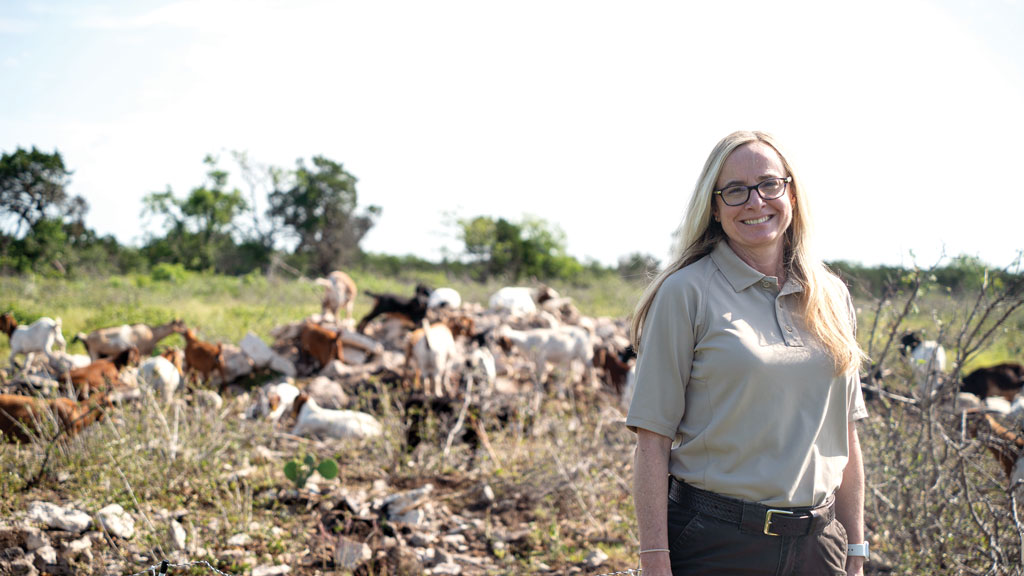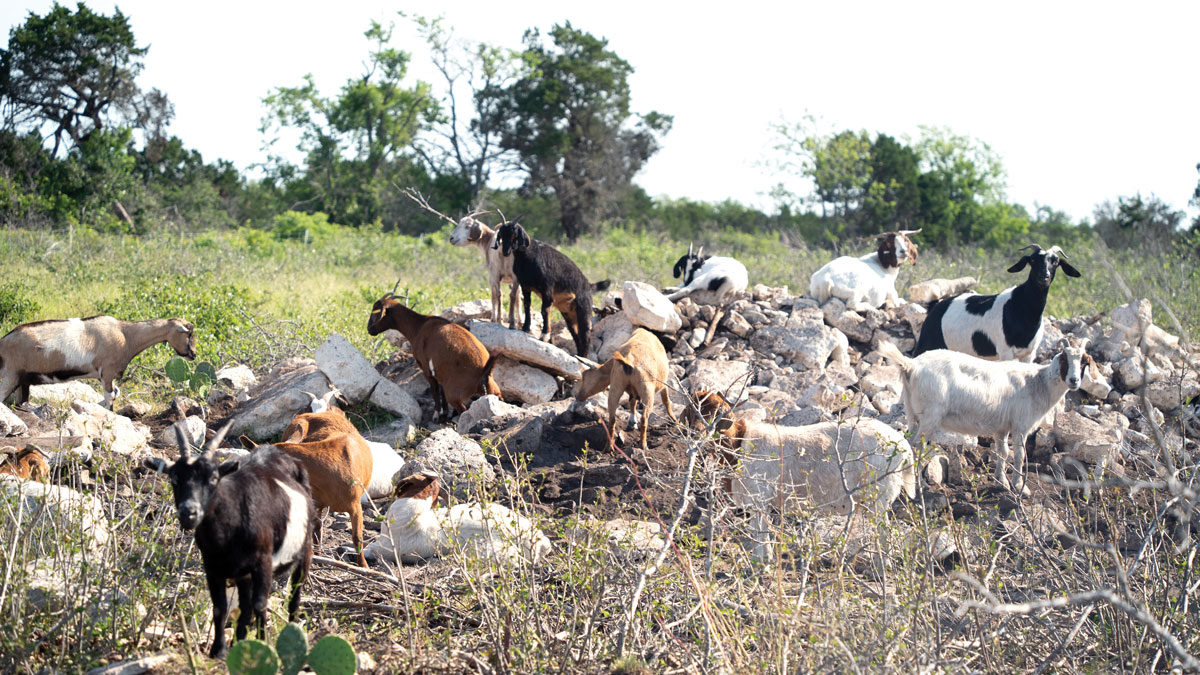
Balcones Canyonlands National Wildlife Refuge manager Kelly Perky on the outskirts of the refuge, where goats are used to create viable habitat for the black-capped vireo, once an endangered species. Staff photo by Dakota Morrissiey
It’s all about the scrub. Black-capped vireos live in it and goats eat it. The balance between those two needs creates the perfect habitat for the once-endangered songbird, which makes its home in Balcones Canyonlands National Wildlife Refuge.
Sitting atop the rugged convergence of Burnet, Travis, and Williamson counties, the refuge is known for its winding limestone canyons, crystal-clear creeks, and two little birds: the black-capped vireo and the golden-cheeked warbler. The 27,000-acre refuge was established in 1992 to provide habitat and a safe haven for the two birds, which, at the time, were on the Endangered Species List.
The golden-cheeked warbler is still endangered, but the black-capped vireo was taken off of the list in 2018 due in large part to the work done preserving its habitat at Balcones Canyonlands. Keeping the refuge habitable for its MVBs (most valuable birds) is the purview of refuge manager Kelly Perky.
”It appears that (the vireos) like shrub or scrub habitat that is 30 to 70 percent shrubs with grassland in between,” Perky said. “Think islands of shrubs, 5 or 6 feet tall.”

Black-capped vireos feed, hide, and hop from shrub island to shrub island as they forage, traveling across the open grassland in between. Too much scrub and they can’t navigate easily. No scrub and they have nowhere to live.
In contrast, golden-cheeked warblers require thick oak and juniper woodlands, which presents the challenge of accommodating the different needs and habitats of both birds. Just by its mere existence, Balcones Canyonlands is well suited for the job of nurturing warblers. The requirements of vireos, however, have to be managed.
What once threatened the birds has now come to their rescue.
A federal government subsidy for goat and sheep ranchers that stretched through much of the 20th century devastated the vireo’s habitat. In the 1960s, Texas Hill Country ranches exploded with angora goats prized for their silky mohair wool.
“The (black-capped vireo) population crashed pretty quickly because there was no habitat for them to use,” Perky said.
Voracious eaters, the goats had chomped it all away.
Luckily for the birds, the subsidy ended in the early 1990s and goat ranching fell out of favor.
By 2018, the vireo was removed from the Endangered Species List, but then a new problem sprang up—literally—with no goats to keep overgrowth at bay.
“The (vireos) like shin oak, but it expands when you leave it alone or chop it down,” Perky said. “It will choke out a habitat quickly.”
With the goats gone, the landscape started to change. Shin oaks, a scraggly oak species, began to dominate what was once prime vireo habitat. The oaks grew brushy and closed the gaps between bushes, creating dense thickets that the vireos couldn’t use for feeding and nesting.
Refuge staff routinely used controlled fires and old-fashioned elbow grease to clear the land, but it wasn’t enough. The unruly shin oak would return with a vengeance whether burned or chopped.
This is where the goats come back in.

After hearing a presentation from a fellow conservationist who used goats to clear away brush from a cave entrance, Perky had an idea. The refuge couldn’t invest in building and managing its own goat herd right away, but a trial run with someone else’s goats might work.
A quick internet search revealed a full-service goat rental business just a stone’s throw away in Burnet. In no time, Perky contracted Goats on the Go, a new business featured in the July 2022 issue of The Picayune Magazine, to clear some of the thickest scrubs on the refuge. It worked shockingly well.
“We’ve seen how effective they can be in a short period of time in reducing the shin oak,” Perky said. “It’s kind of perfect for what we want, and it’s really good for the goats, too.”
The animals are placed on specific portions of the refuge and allowed to munch away at the shin oak, hemmed in by a portable electric fence. They can clear a patch of land in four days and create ample breathing room for grasses to grow and vireos to traverse.
Balcones Canyonlands refuge is committed to supporting at least 6,000 acres of vireo habitat in perpetuity, guaranteeing that the little bird will have a home, even as development spreads across Texas.
“Our goal is to have a mosaic of habitats that support all species but with a little more focus on the warbler and the vireo,” Perky said.
Balcones Canyonlands National Wildlife Refuge is a hiking destination in the Highland Lakes with two trail systems: Doeskin Ranch and Warbler Vista. The refuge is part of the U.S. Fish and Wildlife Service and entrance is free.









